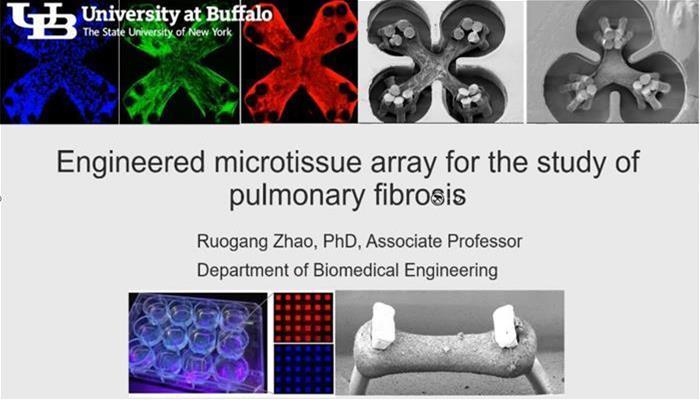Engineered Microtissue Array for the Study of Pulmonary Fibrosis

I will present engineering approaches to model fibrosis- associated biomechanical properties of the alveolar tissue and the use of such in vitro models for the development of anti-fibrosis drugs.
Presentation by Dr. Ruogang Zhao, Ph.D., Associate Professor, Department of Biomedical Engineering, University at Buffalo at the Regional Respirology Rounds, Division of Respirology, McMaster University January 26th, 2021
Fibrosis is a severe health problem characterized by progressive stiffening of tissues which causes organ malfunction and failure. Current development of anti-fibrosis drugs is facing major obstacles as most candidate drugs that were selected in pre-clinical animal studies failed in human clinical trials. In this talk, I will present engineering approaches to model fibrosis- associated biomechanical properties of the alveolar tissue and the use of such in vitro models for the development of anti-fibrosis drugs.
The engineered microtissue is able to model key biomechanical events occurred during lung fibrogenesis including progressive stiffening of alveolar tissue, decline in alveolar compliance and macrophage-induced alveolar contraction. With these capabilities, we provide proof of principle for using this fibrotic tissue array for phenotypic analysis of the therapeutic efficacy of two anti-fibrosis drugs recently approved by the FDA.
Preventative treatments with Pirfenidone and Nintedanib reduce the tissue contractility and prevent the decline in tissue compliance. In a therapeutic treatment regimen, both drugs restore tissue compliance. These results highlight the pathophysiologically relevant modeling capability of the novel fibrotic microtissue system.
[Please complete our feedback form]
